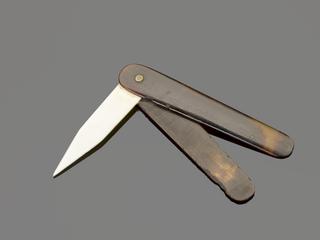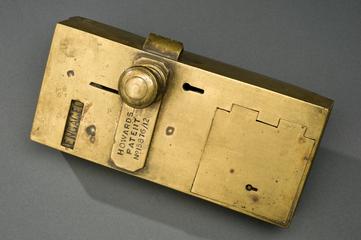
Portrait laminated sign with photographs showing the procedure for transferring samples from clinic to the Oxford Vaccine Group Lab during the COV001 clinical trial, used during the clinical trials of the ChAdOx1 nCoV-19, Oxford/AstraZeneca COVID-19 vaccine by the Oxford Vaccine Group, the Jenner Institute and the Centre for Clinical Vaccinology and Tropical Medicine (CCVTM)
Testing any new vaccine or medicine relies on healthy volunteers from every age range to come forward. Oxford’s COVID-19 vaccine trials recruited people from all over the United Kingdom. To help speed up the process but maintain safety controls, vaccine developers were allowed to run parts of the trial simultaneously. Known as COV001, phase 1-2 trial involved 1112 participants and COV002, phase 2-3, involved over 12000 adults.
Volunteers are given a health check including blood tests, to screen for health conditions and any immune response to COVID-19. Each person is taken through an informed consent form, ensuring they understand what the trial is and what the risks involved are. Once confirmed in the trial, the volunteer would be randomly assigned to either receive the Oxford COVID-19 vaccine or a meningitis vaccine – which acted as a control. Some minor side effects such as a sore arm, headache and fever were expected from the COVID-19 vaccine. Those in the control group had to be given something that would cause similar side effects, ensuring no-one could work out which group they were in, until the end of the trial.
Socially distanced ‘trial huts’ were built at the CCVTM’s main trial site at the Churchill Hospital, Oxford. Volunteers visited on two occasions for their vaccine doses and then for regular blood tests over the course of a year to see how well the vaccine was working. When blood samples (serum) were taken from volunteers, they were centrifuged or spun and separated into smaller pots (cryovials). Holders and pipettes are used to transfer the serum and the cells after the sample has been centrifuged.
Moving samples around was also done in accordance with strict protocols to ensure the integrity of the samples. QR codes were used to track them, and temperature monitors used to ensure they remained at a testable temperature.
Volunteers were also asked to take weekly COVID-19 swab tests to assess who was infected with COVID-19, even if they had no symptoms. Each volunteer was given a kit including an emergency contact card, and a digital thermometer and a paper ruler to monitor their reaction.
Details
- Category:
- Public Health & Hygiene
- Object Number:
- 2022-1090
- Materials:
- paper (fibre product) and plastic (unidentified)
- Measurements:
-
overall: 330 mm x 240 mm
- type:
- papers



